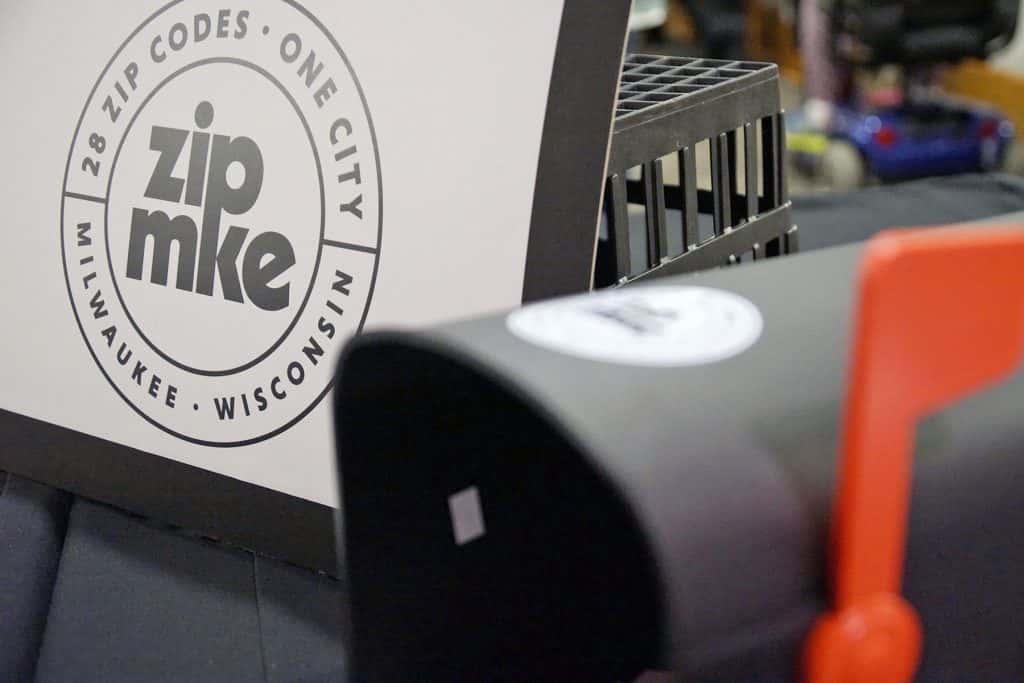
Reggie Jackson details the institution of racial discrimination that White Americans continue to ignore or support. This feature is part of a special series of articles that takes a closer look at the issue of Racism in the United States, understanding what Racism is and its social impact, along with exploring the conditions of Racism in Milwaukee’s culture. http://mkeind.com/systemicracism
“Man had marked this woman’s sin by a scarlet letter, which had such potent and disastrous efficacy that no human sympathy could reach her, save it were sinful like herself.” – Nathaniel Hawthorne, “The Scarlet Letter” (1850)
In Hawthorne’s masterpiece, Hester Prynne was punished after conceiving a daughter through an affair. She is forced to wear a scarlet “A” on her dress which stands for “adulteress.” Her daughter Pearl is shunned by other children for her mother’s sin. Her partner in sin, the Reverend Arthur Dimmesdale, is finally exposed for his role in that relationship. The “scarlet letter” has come to symbolize a shame that is always public in America.
For those of us in the non-white racial category in this country, our skin, our language and our cultures are our scarlet letters and are devoid of shame. We can’t escape the negative representation attached to our “race.” Although race is a social construct and not biologically real, it has become real in our lives. We do not have to do anything to receive a scarlet letter, we receive it at birth.
With this scarlet letter comes a long list of beliefs, and stereotypes about us and the enduring stories told about us. Constant repetition of these stories and stereotypes over generations, makes it very hard to escape their resilience in the conscious and unconscious minds of people in this country and abroad.
We are currently living in a time where the nation has been awakened to the reality of systemic racism in the wake of the murder of George Floyd in May. As to be expected, there has been a backlash to the exposure of systemic racism on the national scale. Those who want to maintain the status quo — a continuance of systemic racialized advantages for whites — they will continue to argue that systemic racism is a myth. They argue out loud that America has never disadvantaged non-white people, or when it has they claim the extent of it has been exaggerated.
“Against this history, in recent years, a series of polemics grounded in poor scholarship has vilified our Founders and our founding. Despite the virtues and accomplishments of this Nation, many students are now taught in school to hate their own country, and to believe that the men and women who built it were not heroes, but rather villains. This radicalized view of American history lacks perspective, obscures virtues, twists motives, ignores or distorts facts, and magnifies flaws, resulting in the truth being concealed and history disfigured. Failing to identify, challenge, and correct this distorted perspective could fray and ultimately erase the bonds that knit our country and culture together.” – President Donald Trump, Executive Order on Establishing the President’s Advisory 1776 Commission (November 2, 2020)
What I find very interesting about this argument is that there was a time where White people in America were not ashamed of racism and flaunted it openly. White racists documented for the world to see, their systemic efforts to build advantages for themselves, while simultaneously disadvantaging those they called a myriad of different names to separate them from membership in their group. In other words, racism was not hidden. The evidence of systemic racism is copious in books, manuscripts, memoirs, laws, public debates, legislative halls and numerous famous court cases.
To argue that systemic racism is a myth is to erase all of those sources of evidence. It is impossible to do so. So those who make the argument have been forced to use one of the oldest tricks known to man, they blame the victims for their condition. I’ve previously written about victim blaming on a number of occasions so I won’t rehash that here. Simply put, victim blaming is finding some characteristic shared by members of a class of people you want to treat poorly, and using that as the rationale for treating them poorly.
For Native Americans it took the form of blaming them for “wasting” the land by not using the land in the way Europeans wanted to use it. For Africans kidnapped and forced to work for free for two and a half centuries, America called them lazy and dumb while making them work sixteen to eighteen hour days and also making it illegal for them to learn to read and write. For those who one day were citizens of Mexico and then forced to be Americans with the The Treaty of Guadalupe Hidalgo, it was calling their language and traditions uncivilized. Those who migrated from Asia were told their way of life was poisonous to this nation and they themselves were a “yellow peril.”
All of these things are copiously documented by White people. Their words in speeches, books, court decisions and numerous other places provide all the evidence needed to prove the existence of long-term systemic racism. Can people who want to shame other Whites into not learning this ugly history erase this evidence? Of course they can’t. Instead they try to double down on the lies we all learned in school about America. Lies are becoming quite the rage over the last four years.
If these deniers of systemic racism are right, then certain fundamental things must be either true or false. Let’s explore a long list of some of these things. Only a fool or liar would deny these things if they spent a little time at a local library or bookstore.
If systemic racism isn’t real, then people of African descent must have voluntarily left their families, friends, and communities by placing themselves in chains and sitting on the coast of Africa waiting for thousands of slaving ships over nearly four hundred years to arrive and take them to an unknown land so that they could work for free.
If systemic racism isn’t real, then millions of Indigenous people must have gotten together and decided that the millions of square miles of homelands they loved were worthless and should be given to strange men from afar so that they could disassociate themselves from their cultures and traditions.
If systemic racism isn’t real, then Africans and Native people must have seen a great benefit in working for free from before the sun rose until well after it set, all to give the fruits of their labor to these people who called themselves Christians.
If systemic racism isn’t real, then those Native leaders who convinced their people to fight people with superior weapons must have just simply wanted to see their families and friends slaughtered for the pure fun of it.
If systemic racism isn’t real, then those Africans who escaped their captivity by fleeing to the brutal winters in Canada must have really preferred freezing to death to living in the comfort of what Isabel Wilkerson called the “warmth of other suns.”
If systemic racism isn’t real, then those people of European ancestry must have some real advantage intellectually, and never feared giving Africans a level playing field by allowing them to read and write for generations.
If systemic racism isn’t real, then African and Native women must have been detestable creatures that White men could only find sexually attractive as rape victims.
If systemic racism isn’t real, then White women who slept with Black men while their husbands and mates were away fighting the Civil War, had no attraction to the forbidden fruit known as “negro brutes” by their husbands.
If systemic racism isn’t real, then all of the African ancestored people called mulatto, quadroon, octoroon etc. really did not have the blood of White rapists coursing through their veins, they were simply born with pale skin, blue eyes and non-curly hair.
If systemic racism isn’t real, then Black people who were given barely edible scraps like the intestines of the hog by Whites really saw no value in eating high off the hog as Whites did.
If systemic racism isn’t real, then Thomas Jefferson never said “ I advance it therefore as a suspicion only, that the blacks, whether originally a distinct race, or made distinct by time and circumstances, are inferior to the whites in the endowments both of body and mind.”
If systemic racism isn’t real, then the U.S. Supreme Court in the famous Dred Scott case did not say about Blacks that, “They had for more than a century before been regarded as beings of an inferior order, and altogether unfit to associate with the white race, either in social or political relations; and so far inferior, that they had no rights which the white man was bound to respect; and that the negro might justly and lawfully be reduced to slavery for his benefit.”
If systemic racism isn’t real, then President Andrew Jackson in his fifth annual message to the country never said this about native Americans. “They have neither the intelligence, the industry, the moral habits, nor the desire of improvement which are essential to any favorable change in their condition. Established in the midst of another and a superior race, and without appreciating the causes of their inferiority or seeking to control them, they must necessarily yield to the force of circumstances and ere long disappear.”
If systemic racism isn’t real, then Theodore Roosevelt never said this about Native Americans. “The settler and pioneer have at bottom had justice on their side; this great continent could not have been kept as nothing but a game preserve for squalid savages. Moreover, to the most oppressed Indian nations the whites often acted as a protection, or, at least, they deferred instead of hastening their fate.”
If systemic racism isn’t real, then Arizona, Georgia, Idaho, Louisiana, Missouri, Montana, Nebraska, Nevada, Oregon, South Dakota, Utah, Virginia, and Wyoming did not at one time have a law on the books prohibiting marriage of Asians (they used the term Mongoloids) and Whites.
If systemic racism isn’t real, then a Georgia court in 1869 did not rule that, “The amalgamation of the races is not only unnatural but is always productive of deplorable results.”
If systemic racism isn’t real, then Alabama did not write a law stating, “It shall be unlawful for a negro and white person to play together or in company with each other at any game of pool or billiards.”
If systemic racism isn’t real, then the Federal Housing Administration underwriting manual did not include an article stating “The infiltration of inharmonious racial groups will produce the same effects as those which follow the introduction of nonconforming land uses which tend to lower the levels of land values and to lessen the desirability of residential areas.”
If systemic racism isn’t real, then the U.S. Justice Department in 2012 did not find evidence of widespread mortgage lending discrimination by Wells Fargo Bank and say that “African-American and Hispanic wholesale borrowers paid more than non-Hispanic white wholesale borrowers, not based on borrower risk, but because of their race or national origin. Wells Fargo’s business practice allowed its loan officers and mortgage brokers to vary a loan’s interest rate and other fees from the price it set based on the borrower’s objective credit-related factors . This subjective and unguided pricing discretion resulted in African-American and Hispanic borrowers paying more. The complaint alleges that Wells Fargo was aware the fees and interest rates it was charging discriminated against African-American and Hispanic borrowers, but the actions it took were insufficient and ineffective in stopping it.”
I could continue with a significantly longer list. I’ll suffice it to say that the examples stated above provide evidence of the longstanding practices, polices and beliefs which are the core of systemic racism. It is not hidden history, it was simply omitted history. The facts were and still are left out of what we learn about American history to our detriment. As a result, many still cling to the belief that America has always supported freedom, justice and liberty for all. Contrary to the President’s executive order no one is teaching Americans to hate their country. That’s like saying that if you tell a person to learn that they got what they had because of the advantage of being White that they should hate America.
If systemic racism isn’t real, then the tremendous disparities we see across the country are emblematic of flawed people of color.
For those who choose to continue believing these things, you are a part of the problem. Your denials are counterproductive and tell us why there is so much division in this country today. The United States of America is at the proverbial fork in the road. 2020 will go down as a squandered opportunity to finally tell the truth as Germany and South Africa (regardless of how flawed the Truth and Reconciliation Commission in South Africa has been) both did about their horrible pasts. It could possibly go down as the year we finally expanded our truth telling of the racism embedded in the basic fabric of America. White Americans of “goodwill” must decide which path we take. People of color have done their part by sharing their stories.
“If the pain has often been unbearable and the revelations shocking to all of us, it is because they indeed bring us the beginnings of a common understanding of what happened and a steady restoration of the nation’s humanity… We are extricating ourselves from a system that insulted our common humanity by dividing us from one another on the basis of race and setting us against each other as oppressed and oppressor.” – Nelson Mandela, Statement about the “Truth and Reconciliation Commission Report” (October 1998)
- Systemic Racism 101: Dear America, I can’t believe what you say because I see what you do
- Systemic Racism 201: The advantages Whites have felt entitled to for generations
- Systemic Racism 301: Denying that Systematic Racism is real does not change the truth of its existence
- Systemic Racism 401: The Myth of American Meritocracy














